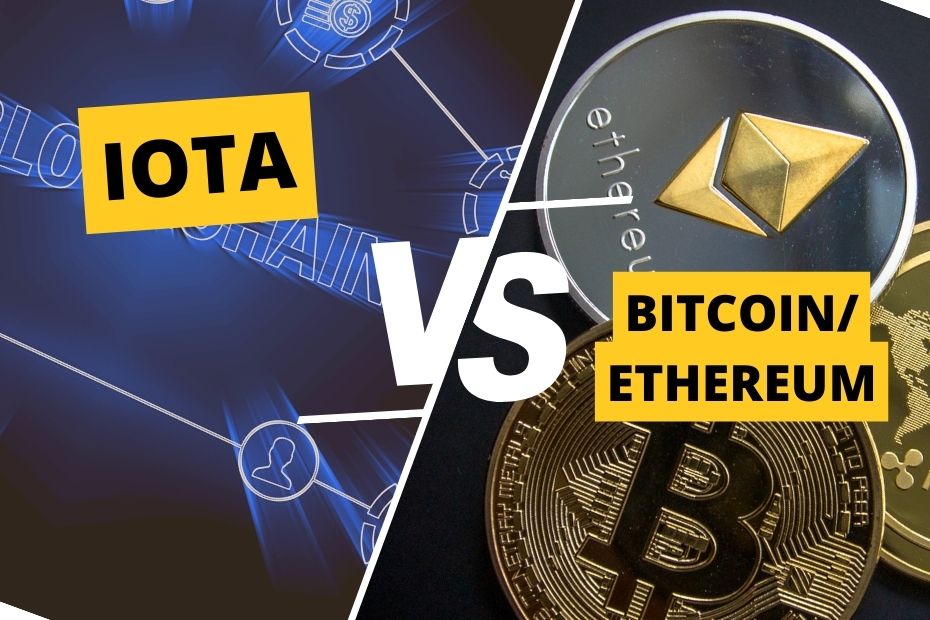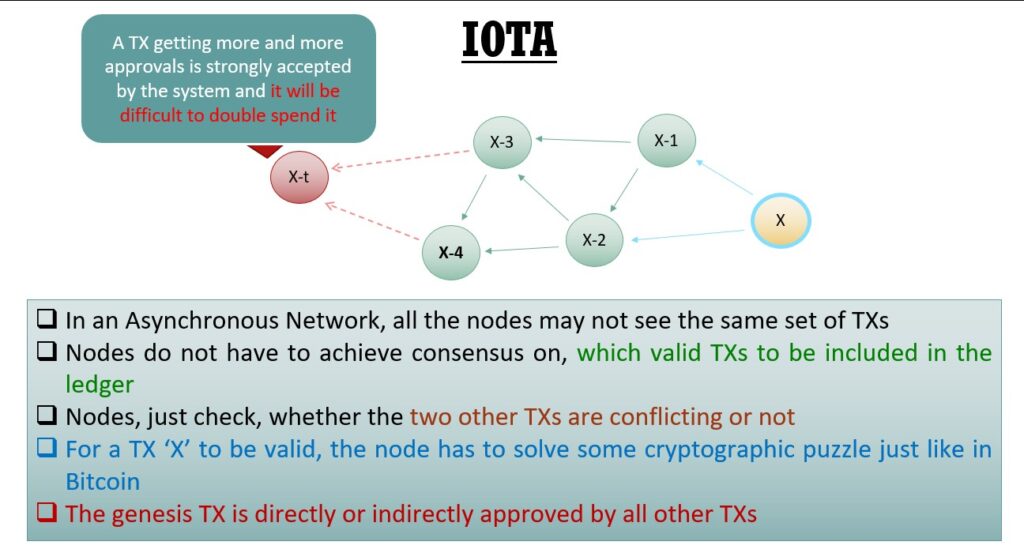
IOTA blockchain is a decentralized distributed ledger specially designed for the internet of things. The article will explain the difference between the working of public blockchains and IoTA blockchain architecture and how it can help to mitigate various problems of normal blockchains in the Internet of things scenario.
Table of Contents
How IOTA Tangle works
IoTA is not a blockchain in the pure sense. It is an alternative way to maintain the distributed ledger to achieve blockchain advantages with more speed and low latency. IoTA maintains the transaction history in the form of a tangle which is a DAG (Directed Acylic Graph).
IOTA Architecture
IOTA architecture consists of flowing entities:-
- Clients: That initiate transactions on IOTA Tangle
- Nodes: A set of networked devices running the core IOTA software to ensure the integrity of the Tangle.
- Tangle: An immutable ledger stored in the form of a DAG.
In mathematical terms, the Tangle is a Directed Acyclic Graph – DAG. which represents the paths of the transactions. Every transaction needs to validate two historical transactions which are shown by a directed path between these transactions.

Transactions in IOTA Blockchain
The transactions are processed in IOTA blockchain in three steps.
1. Signing of Transactions
To initiate a transaction, a user signs the transaction with his private key as was the case of transactions in bitcoin or Ethereum blockchains.
2. Tip Selection
In IOTA, each transaction is required to sign two previously initiated transactions. To select the two transactions, an algorithm called MCMC (Markov Chain Monte Carlo) is run which selects the two unconfirmed transactions randomly.
3. Proof of Work consensus protocol
A proof of work consensus protocol similar to Hashcash is run by the user to have his transaction accepted by the network.
After the PoW algorithm, the transactions are completed. The transaction will be chosen randomly by any future transactions for verification and validation which will then confirm the transaction. IOTA is an asynchronous network where the nodes do not have to achieve consensus to reach the same state of the decentralized ledger. All nodes may not even see the same set of transactions.

The difference between IOTA Blockchain and Bitcoin/ Ethereum Blockchains
The major differences in IOTA blockchain architecture and our Bitcoin or Ethereum Blockchains can be summed up as under:-
| Ser | IOTA | Blockchains(Ethereum/ Bitcoin0 |
| 1 | There are No Blocks in IOTA. Transactions record is kept as a chain of transactions. | There is a Chain of Blocks in normal blockchains that records all transactions. |
| 2 | There is Zero fees for transactions. | A transaction fee is associated with each transaction. |
| 3 | Consensus (validation of transactions) and the transaction process are interknitted. to carry out a transaction, the initiator must also contribute in validating the previous transactions. | The consensus mechanism and transactions are decoupled. Separate consensus protocols like PoW and PoS are employed for validating blocks and transactions. |
| 4 | A single transaction references two past transactions i.e. To initiate a transaction first you have to validate two past transactions. This ensures scalability of IOTA | Bitcoin and Ethereum blockchains are not scalable and are limited by the number of transactions that can take place at a time. |
| 5 | Transaction processing speed is 182 TPS which can be raised up to to 100 transactions per second. | transaction processing speed is only 7-10 TPS |

Web 3.0 is the future. The researchers and developers are working to solve the inherent problems of web 3.0. IOTA blockchain architecture was proposed to solve the issues of scalability and latency that is inherited due to normal blockchains. IOTA can be a solution for IoT devices which require scalability and fast transaction speeds.
Comparison of IOTA and other consensus protocols
The consensus protocols in blockchain ensure the security of the network. A brief comparison of consensus protocols pow vs pos vs Iota is given below:-

FAQ
Is IoTA a blockchain?
IOTA is a decentralized ledger technology to solve the issues of scalability and latency in blockchains. There are no blocks. Every transaction verifies randomly two previous transactions to make a chain of valid transactions.
Why Ethereum blockchain can not be used in IOTS
Ethereum blockchain sufferers from the issues of scalability and latency. Iot devices require fast processing of transactions.IOTA architecture has been proposed to solve these issues for Iots.
How Transactions are stored in IOTA Tangle?
Transactions are stored in IOTA Tangle in the form of directed acyclic graph (DAG) which indicates the series of paths that transactions take. Each transaction validate two previous transactions which give rise to a graph like pattern.